Chinese president Xi Jinping met with Kim Jong Un in Pyongyang last week, the first time a Chinese head of state has visited North Korea since 2005. The two sides pledged to improve bilateral ties and to deepen cooperation and increase exchanges toward “cementing mutual understanding and trust.” The meeting was the fifth time Xi and Kim have met in a little over a year and seemed appropriate for an alliance that was forged in blood when Chinese troops aided Pyongyang during the Korean War in 1950. But the cheering North Korean crowds and red-carpet treatment that greeted Xi upon his arrival in Pyongyang are unlikely to unravel the deep mistrust that have marked the Chinese-North Korean relationship since Kim Jong Un came to power in December 2011.
Kim Jong Un had kicked off 2019 with a visit to Beijing in early January, probably looking to bolster bilateral ties, mitigate international sanctions, improve North Korea’s economic situation, and reinforce his status as a responsible leader of a nuclear-armed state. Indeed, in his latest meeting with Xi on his (Kim’s) home turf, Kim predictably tried to put the onus on Washington for the stalemate in nuclear talks. According to news reports, Kim said that North Korea had not “received positive responses from the party concerned,” meaning the Trump administration, despite Pyongyang’s “active measures to avoid tension…on the Korean Peninsula.” Xi, for his part, welcomed the warming of China-North Korea ties over the past 18 months, perhaps seeking to revitalize Beijing’s role in Korean Peninsula issues, avoid being sidelined in North Korean denuclearization discussions, and prevent a return to the “fire and fury” rhetoric that brought the U.S. and North Korea to the brink of conflict in 2017.
The intensity of China-North Korea diplomatic engagement in recent months belies the strained bilateral ties that marked the first seven years of Kim’s rule. Kim’s father, Kim Jong Il, had sought to strengthen the relationship with Beijing in order to bolster his son’s succession prospects and to mitigate the impact of international opprobrium and sanctions for his nuclear activities. The elder Kim visited China four times between 2010-2011 and secured robust economic aid from from then-Chinese president Hu Jintao whose concern for stability during the unprecedented second dynastic succession in North Korea made him more amenable to pledges of economic and political support to the often-troublesome neighbor.
However, on assuming leadership, young Kim placed a higher priority on developing and “completing” the nuclear weapons program—and on North Korea’s ability to demonstrate a capability to hit the United States with nuclear-capable intercontinental ballistic missiles—than on dealing with China’s preference that for stability. He pressed the accelerator on strategic weapons development despite Beijing’s admonitions and in open defiance of President Xi Jinping, who came to power in 2012. Kim was probably seeking to show that he was determined to show his toughness to internal and external audiences and that he would be beholden to no one, not even his rich and powerful neighbor.
In his first six years in power, the young Kim has conducted nearly 90 ballistic missile tests, including intercontinental ballistic missiles—three times more than his father and grandfather combined—and conducted four of the regime’s six nuclear tests. Kim’s actions earned international condemnation and a slew of United Nations sanctions. Kim also ratcheted up tension with South Korea, issuing threats to hit the South Korean presidential Blue House, firing artillery around the islands in the Northern Limit Line (the disputed maritime border), and nearly bringing the two Koreas to the brink of war after a North Korean landmine maimed two South Korean soldiers who had been patrolling the Demilitarized Zone.
Meanwhile, Kim did little to build ties with Beijing. His aggressiveness tested Chinese tolerance, which had been waning since North Korea’s first nuclear test in 2006 and its withdrawal from the Six-Party Talks nuclear negotiations in 2009. As high-level exchanges came to a near standstill, Kim thumbed his nose at China’s support for United Nations sanctions and conducted ballistic missile tests before Xi’s convening of priority Chinese events such as the Belt and Road Forum in May 2017. An exasperated Xi Jinping ramped up the pressure and supported U.N. sanctions in 2016 in 2017 that imposed sectoral sanctions on important North Korean industries, reducing North Korean exports to China by a whopping 88 percent last year.
The fissures in the relationship were manifest in other ways. The Chinese government over the past decade opened up the space for public criticism of North Korea in authoritative media, suggesting that Chinese leaders were questioning the strategic value of the alliance with Pyongyang. Xi’s 2014 visit to South Korea before going to North Korea and his cozying up with then-South Korean president Park Geun-hye signaled that the relationship with Pyongyang was at rock-bottom.
Nevertheless, the spate of Xi-Kim meetings in recent months suggests that the two sides still see value in maintaining the relationship and that we should anticipate additional high-level exchanges and cultural, economic, and educational delegations between the two sides. But in refurbishing bilateral relations, Xi also seeks to project Chinese regional leadership, remind Kim of his dependence on China, and rein in the young leader’s aggressive proclivities by encouraging a focus on economic development. For his part, Kim is likely to continue trying to ensure Beijing’s economic and political support, even as he refuses to abandon his nuclear weapons program. He is also probably looking to use his improved relationship with Xi to amplify his message that he will not denuclearize without “security guarantees” from the United States, impede coordination between Beijing and Washington on sanctions implementation, and cast blame on the U.S. for lack of progress.
Despite the summit, Xi and Kim are unlikely to develop a genuinely deep or warm personal relationship, at least in the near future, so sustained strategic cooperation will be constrained by mistrust, their 30-year age gap, and conflicting interests between Beijing and Pyongyang. But Xi and Kim’s mending of fences could pose a risk to U.S.-China cooperation on North Korean denuclearization. Washington’s challenge, then, is to ensure that China’s efforts to draw North Korea closer do not undermine the pressure campaign that was designed to sharpen Kim Jong Un’s choice and warn Kim that he can’t have both nuclear weapons and economic development. After all, Kim’s comment to Xi that he would exercise “patience” was a veiled threat not just for Washington, but also for Beijing, so it is in China’s interest to work with the U.S. on this shared security problem.
Hannah Cole, a former Brookings intern, contributed research to this piece.
The Brookings Institution is committed to quality, independence, and impact.
We are supported by a diverse array of funders. In line with our values and policies, each Brookings publication represents the sole views of its author(s).


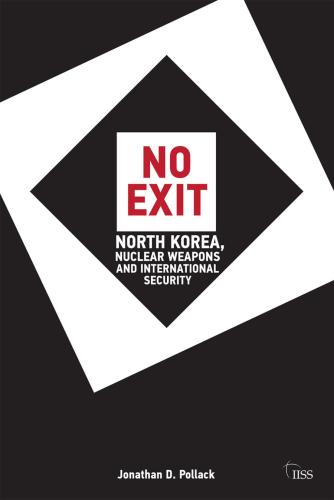
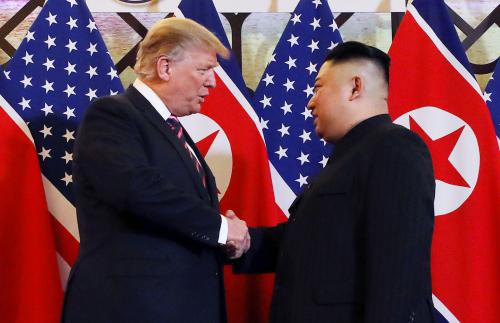
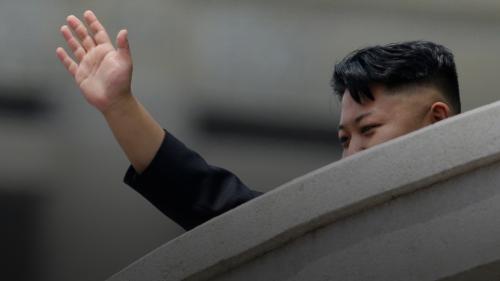


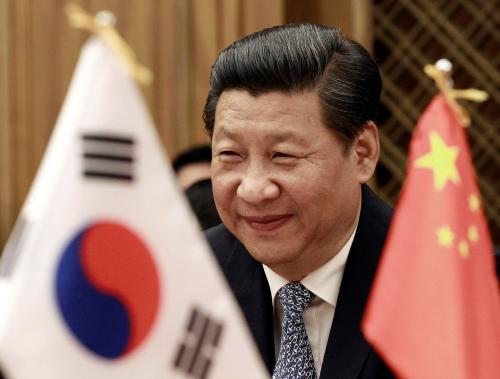
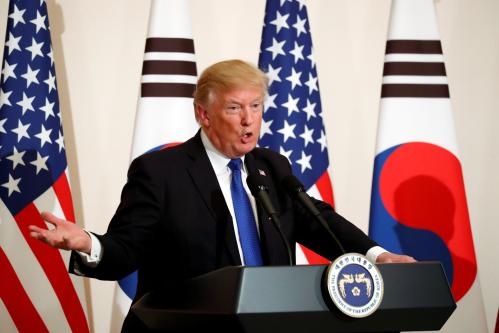
Commentary
Mr. Xi goes to Pyongyang
June 24, 2019